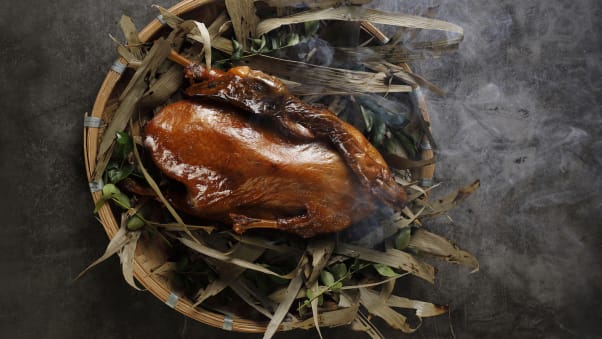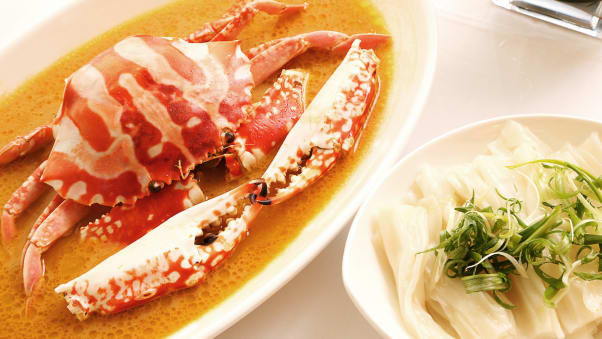For decades, Chinese food has been under-appreciated on the world stage. That's finally changing
Maggie Hiufu Wong, CNN • Published 23rd May 2021

Hong Kong (CNN) — In 1997, restaurateur Danny Yip moved back to Hong Kong from Australia.
Having worked in the food and beverage industry since the 1980s, he vowed he would never open another restaurant again.
"It was overwhelmingly exhausting," he recalls during an interview with CNN Travel.
Instead, upon returning to his home city, he founded a successful internet company.
It didn't take long before he broke his vow.
Missing the action and the fun of the industry, he sold his company in the 2000s and opened The Chairman, a humble two-story Cantonese restaurant located in a quiet street in Hong Kong's Sheung Wan district.
It ended up being a sound decision -- today, The Chairman is widely considered to be the epitome of modern Chinese restaurants.
First Chinese restaurant to win No.1
The Chairman won the top spot in this year's Asia's 50 Best Restaurants Awards -- the first-ever Chinese restaurant to win the accolade, which is decided on by an academy of 318 voters spread throughout Asia.
"It's a straightforward restaurant -- no frills, no gimmicks, just brilliant ingredient-focused Cantonese food," says William Drew, director of content for the World's 50 Best Restaurants, which organizes the awards.
"Perhaps its success is in part down to diners reevaluating what's most important and concluding that unshowy destinations that are really dedicated to sourcing the best ingredients and creating imaginative and delicious dishes should be highly valued."
An obvious example of this is The Chairman's "Camphor Wood Smoked 7 Spiced Goose," which took months to develop -- and it's not even on the menu. Diners need to pre-order it.

The Chairman's famed "Camphor Wood Smoked 7 Spiced Goose" dish takes three days to prepare.
The Chairman
First, the goose is marinated in the juices of chicken, duck, pigeon and goose for two days. Then it's steamed in low heat for eight hours.
Finally, it's smoked in a gentle camphor wood fire, with a chef having to change the wood midway through the process.
Three days of labor results in tender and moist slabs of goose meat and supremely intense flavors that require no accompaniments.
"The Chairman is notable for its consistency through the years, but at the same time it has never stood still. It does not try to be anything it is not, but the culinary team are forever exploring new ingredients and creating new dishes," adds Drew.
To Yip, earning the top spot is a win for Chinese cuisine in general.
"Being a Chinese restaurant, it was a special moment not just to us but means everything to whoever is working in Chinese restaurants," he says.
"Many young chefs won't consider Chinese cooking when they first join the industry. Internationally, there are many cuisines that have ranked better than Chinese -- French, Japanese, even Scandinavian and South American. Many doubted Chinese, questioning if there is energy left for this old cuisine."
The world's complicated relationship with Chinese cuisine
Looking at previous Asia's 50 Best Restaurants lists since 2013, only Lung King Heen -- the upscale Michelin three-star Cantonese restaurant in Four Seasons Hong Kong -- managed to come close to the top, ranked No. 9 and No. 10 in 2014 and 2016, respectively.
The Chairman came in second last year. It was also the only Chinese restaurant to grace the World's 50 Best Restaurants List in 2019, ranking 41st. (The 2020 edition of the World's 50 Best Restaurants awards was canceled because of the pandemic.)

The Chairman's steamed, fresh flowery crab.
Courtesy The Chairman
When it comes to the Michelin Guide, it's also uncommon to see Chinese restaurants earn plaudits outside of Asia.
Back in 2009 when the first Hong Kong and Macau edition of the Michelin Guide was released, Lung King Heen became the first-ever Chinese restaurant to win three stars in the French guide's 109 years of history.
Today, five out of 10 three-star restaurants in the 2021 guide are Chinese.
Elsewhere in the region, Sazenka recently became the first Chinese restaurant to be awarded three Michelin stars in Tokyo's 2021 guide.
Over in Europe, A. Wong, which serves pan-regional Chinese cuisine with a modern take, became the first Chinese restaurant to win two Michelin stars outside Asia with the release of this year's London Michelin Guide.
So why is it rare for Chinese restaurants -- in spite of their global popularity and long history -- to get international recognition, compared to cuisines like French or Japanese?

London restaurant A. Wong has two Michelin stars.
Murray Wilson/A Wong
Andrew Wong, chef-owner of restaurant A. Wong, offers a possible explanation.
"During the cultural revolution, imperial chefs emigrated to England, the US, Canada and other parts of Europe. This is important because it has stemmed the growth of Chinese cuisine on a global scale," says the chef, who studied anthropology before taking over the Chinese restaurant his grandparents founded in London.
"Those chefs traveled, used their techniques and integrated them into other cultures with success. They made Chinese food one of the most loved cuisines globally.
"However, because we've enjoyed such a long history of interpreting and reinterpreting our cuisine within international cities, some things have been lost somewhere along the lines. Communication on the technique, craft, dedication, sourcing and obsessiveness about ingredients has been lost within Chinese gastronomy."
However, things have been looking up for Chinese cuisine in the last decade.
More modern Chinese establishments are popping up around the world, in line with an increased willingness among diners to try unfamiliar cuisines.
A. Wong's "Taste of China" menu, for example, takes London diners on a journey around China, serving local dishes that are well-researched and well-seasoned with historical stories.
"The stars are now lining up, and international chefs will be looking to learn about technique, ingredients and new flavors from Chinese chefs," says Wong.








 Reply With Quote
Reply With Quote